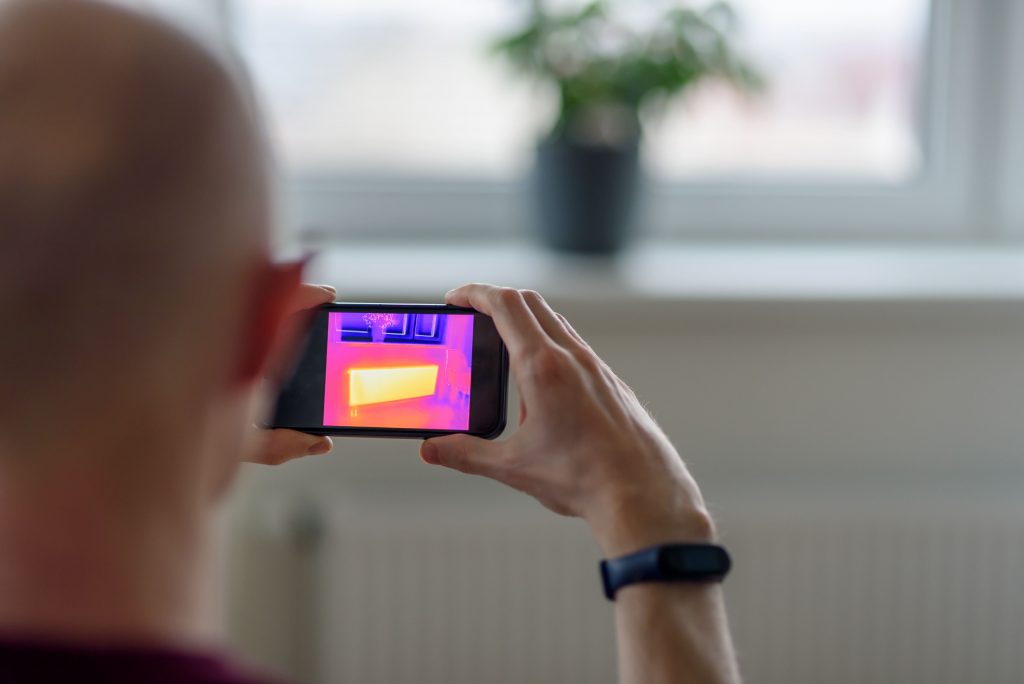The electromagnetic spectrum is a wide range of radiation energies that come in the form of waves. We have been using these energies for years to improve our daily life. And infrared radiation is a major part of this.
People might be unaware that our everyday devices use IR technology. The remote control of your TV, the non-contact thermometer in stores, and the heat scanner at airports all use infrared energy to operate. We are surrounded by infrared waves, we simply cannot see them.
In this article, we will explore the mysteries of infrared light and the wonders of IR optics. We will also teach you how to detect infrared light with a simple device that you already have on hand. So, let’s jump right in!
Why People Can’t See Infrared Light
The sun emits a full spectrum of light waves ranging from ultraviolet rays to infrared waves. However, the human eye can only perceive a certain range of wavelengths dubbed as the visible light spectrum, which ranges from 380 to 740 nanometers. Anything above or below this range is not visible to the naked eye.
Infrared light has a longer wavelength than the visible spectrum to humans. It starts at 700 nanometers and up to 1 millimeter. Since the human eye is not adapted to perceive these wavelengths, we cannot see infrared illumination.
Some animals, such as owls, mosquitoes, bed bugs, and some snakes, can detect infrared waves, which aid in food hunting. They are equipped with a special vision that is sensitive to infrared. If we want to see infrared as they do, we would need the help of infrared sensors.
What Is an Infrared Sensor?
The heat emitted by infrared rays is perceived as waves. All humans, animals, and objects radiate these heat waves. The hotter an object is, means the more intense the IR wave is. With the human eye’s limitation in perception, we need the help of special lenses to see infrared light. Infrared camera lenses or night-vision goggles that can detect thermal radiation are used to catch IR illumination.
An infrared sensor is specifically made to pick up heat waves. It is the thermal signature of objects that an infrared detector captures to form the image that we can see on a screen. The sensor does not need light to detect heat, which makes it useful in identifying objects in low or poor lighting conditions. Other devices capture the reflected infrared rays to form an electronic image of the object. This is commonly employed in devices used in commercial settings.

Why Cameras Can Detect Infrared Light
Lenses are made to augment the constraints of the human eye. Humans have manufactured lenses that magnify images, letting us see objects from great distances. In addition to that, we have also developed lenses that help us see what is not visible to the naked eye, namely infrared light.
Cameras with infrared optics and sensors can capture invisible IR light in the form of heat waves emitted by objects. The waves are transmitted into the lens. An image is then reconstructed on the screen based on the heat signature of the object.
Different temperatures are represented by different colors. With blue hues for cool temperatures and yellows, oranges, and reds to signify hotter temperatures. These colors form a working image of the object being perceived.
Steps on How to Detect Infrared Light with Your Smartphone
Smartphones typically have two built-in cameras, one at the back and another at the front. The rear-facing lens usually has an infrared filter that takes out the infrared waves from the captured image or video. The front-facing camera, on the other hand, has little to no IR filter, which means it will let infrared light through its lens and capture it in the image or video.
So, for this experiment, we will be using the front-facing camera of your smartphone to show you how to see infrared light with a phone. It is a simple method that shows fascinating results.
1. Get a hold of a working TV remote control
Since we cannot see infrared light, you will not be able to perceive the light emitted by the remote control whenever you press a button. To test the remote, press a button and then check if the TV responds to it. You may need to replace the batteries with fresh ones to ensure that it is working properly.
2. Use the front camera of your smartphone
Open the camera app on your smartphone and make sure the front-facing camera is the one being used. Point the remote control at the front camera.
3. Press a button on the remote
While your phone is in camera mode, press any button on the remote control. This will trigger infrared waves to emit from the small bulb at the tip of the remote. Do this several times to make sure you get a good view of it on your phone screen.
4. Watch the screen to see the infrared light
Look at your phone’s screen as you press the remote control. Watch as the light flashes whenever you press a button on the remote. You cannot see this light with your naked eye. But with the help of your smartphone’s camera, you can now see on the screen the infrared light it emits.
In Summary
Infrared light is present in our everyday life. It is used in non-contact thermometers, thermal imaging in airports, and some night-vision goggles. Remote controls use IR waves to send signals and operate our TVs. Even humans, animals, and objects emit infrared waves. We cannot perceive infrared with the naked eye. But with the assistance of infrared optics and sensors, like the ones on our smartphones, we can get a glimpse of this natural phenomenon.
GREAT ARTICLE!
Share this article to gain insights from your connections!

